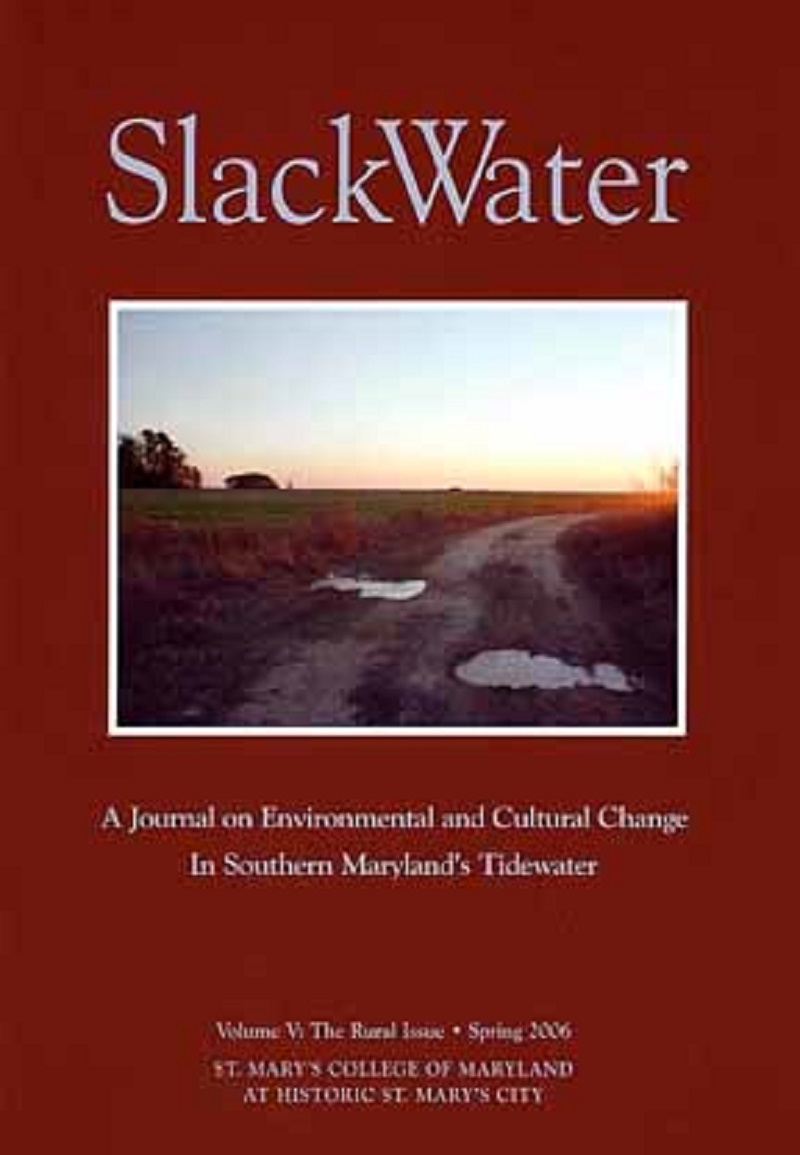Early 20th-Century Education in Rural So. Md.

The SlackWater Center at St. Mary’s College of Maryland is a consortium of students, faculty, and community members documenting and interpreting the region’s changing landscapes. Oral histories are at the core of the center, which encourages students to explore the region through historical documents, images, literature, and scientific and environmental evidence. Some of this work has been published in the print journal SlackWater, some of which is online and some published here. The work below was first published in SlackWater Volume V The Rural Issue in spring 2006.
By Elvare Gaskin,
as told to Gloria Pettaway
Public support of education has its roots in the colonial period, and an 1865 law in Maryland provided free public schools for white and “colored” children. By 1924, there were 86 school houses in St. Mary’s County, 54 for white children and 32 for black children. For most students, classes were held in one- or two-room structures not unlike a small church in plan. Prior to electrification, schools were heated by wood or kerosene stove. Many children, black and white, left school by or before the seventh grade to work with their parents on the farm.
Perhaps nowhere else is the segregation of blacks from whites and whites from blacks in the early 20th century rural landscape more evident than in the public school houses. Maryland’s public school system was annually spending $36.03 on each white child’s education, and only $13.20 per African American child; white teachers were paid twice as much as black teachers. In the mid-1920s, Thurgood Marshall and the NAACP began working to equalize teachers’ salaries. In 1926, the Black Defense League won equal salary for black teachers in Baltimore; however, other counties took longer to catch up. In 1941, the state legislature finally passed salary equalization for all teachers in the state (Callcott 1985).
Elvare Gaskin grew up in Southern Maryland and attended a handful of all-black schools. Her family was very involved with her education. Because her grandmother boarded teachers, Miss Gaskin was allowed to start school at four and a half years of age. After finishing college and receiving her teacher certificate, she started teaching at other schools and finally focused her energies on special education needs. Her story illustrates an African American child’s education in Southern Maryland.
I remember my first day of first grade. We lived next to the one-room school in Scotland, and my grandmother, Nanny Gough, boarded teachers for forty years. When I was four and a half, the teachers would let me sneak into the school, and I’d sit in the school room and hear everything that was going on. There was a large, pot-bellied wood stove in the middle of the room, with these real long benches and desks on either side where three children could sit. The blackboards were on each side of the wall. We had windows on each side, and a Maryland flag and a United States flag in the front.
One teacher would have between 40 and 55 children in our schoolroom, grades one through seven. We had no running water and an outside privy. The drinking water came from my grandmother’s well. Each week two boys were assigned to go and get the water. My grandmother would see them coming and would be standing out by the well to be sure nothing happened, and the boys would draw the water and bring it back to the school. That was our drinking water for the day.
My grandmother always got up and fixed breakfast, and I ate with the teachers. The teachers would leave before I did. Before leaving for school, I had chores to do; taking up chips, washing lamp shades, filling the lamps with oil, cleaning my bedroom and the living room. Then my grandmother would walk me to school.
First thing, we had devotions, with the older children taking turns leading the devotionals. We sang and the teacher read a verse or two from the Bible, and then we would say the allegiance to flag. Sometimes we had health inspection. A doctor would inspect the boys, and the nurse would inspect the girls. They looked at our faces, our teeth, our ears, our eyes, our fingernails. After that, we would settle down to work.
The teacher would put an assignment on the blackboard for the other children, and she would work with the first-grade children. She would give us our lessons or papers to do, and then leave us during our assignments. A lot of times, she would give us penmanship, where we would either trace or make the letters. Then she would go to the other grades and give them their assignment. Then she’d come back to us for our math or English or language. This was done in the morning, and then we had lunch.
Everybody walked to school, and there were some who walked from Cornfield Harbor, five miles to school, and they brought their lunch. Most of the children brought their lunch to school. I didn’t get to bring mine because I lived so close, and I would go home for my lunch. Sometimes, if it was cold, my grandmother would bring a big kettle of vegetable soup – homemade vegetable soup. She’d bring saucers and things, and when she did that, I got to stay at school and eat lunch with the other children.
We had recess after lunch. After recess, we would have history, geography (which included science), and then we’d have a mid-afternoon recess around two or two-thirty. We’d be out about fifteen or twenty minutes, and then we’d come back inside and clean the school. Two people for a week would sweep the floor, dust, and get it ready for the next day. Over the winter months – December through February – the Board of Education paid two people to clean the school and have the fire made in the morning.
I went there through the seventh grade, and then we had graduation. All the black children went to Leonardtown to St. Aloysius Hall. It’s called The Alley now; I think they have bars up there. But St. Aloysius Hall belonged to St. Aloysius Church, and we would all be there dressed in our little white dresses. All the black children had their graduation at the same time, and we would get our little graduation diplomas. When I graduated there wasn’t a public black high school in the county, but there was a black association working towards building one.

Copies of this Slackwater Volume V are available here.
Cardinal Gibbons Institute in Ridge, though, was a Catholic high school. It was a boarding school and had children from out of the south. Most of the teachers also came out of the south. My mother, being Catholic, had talked to her priest, and my grandmother also worked for the principal, Mr. Daniels. Grandmother was telling him now that I had finished elementary school; there wasn’t any place for me to go. Mr. Daniels said, “Yes there is. She can come to Cardinal Gibbons, whether she’s Catholic or not.”
My mother paid tuition, and I went to Cardinal Gibbons right out of elementary school. I started there in September of ’32. Unfortunately, the school ran out of funds, and it closed in December, 1934. It was really a sad time. We were just crying because we had gotten so close. There were children from Prince George’s County and all around the area. Some were sitting on their suitcases waiting for their parents to pick them up. Then I was left again with no place to go.
Mr. Bland, who was the colored supervisor, told my grandmother about the school in Charles County, Pomonkey. Pomonkey was the only black high school in Charles County. There was a house that was used as a dorm there. There was no bus transporation then, and children from south Charles County stayed in that dorm. Mr. Bland investigated for my grandmother, and we went over to see the place and talk to the principal. Nevertheless, I wasn’t the only student there from St. Mary’s County. There had been other students there ahead of me. And that’s how I came to graduate from Pomonkey.






















